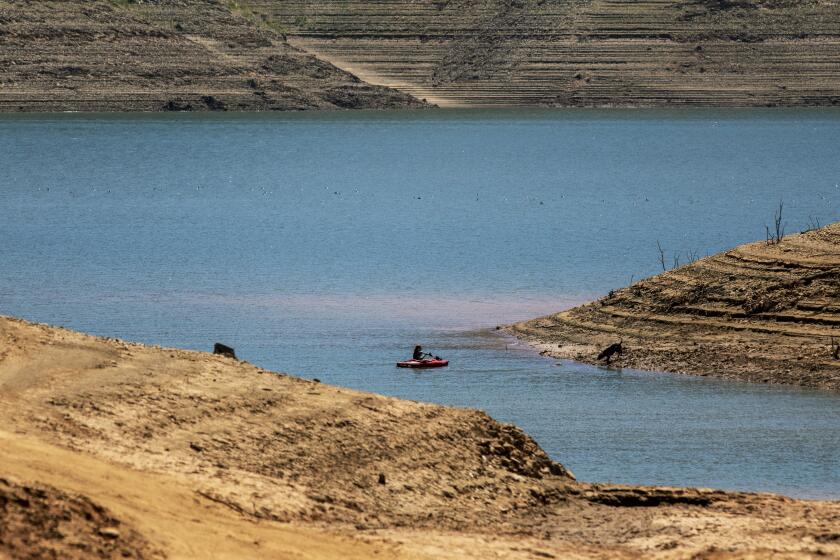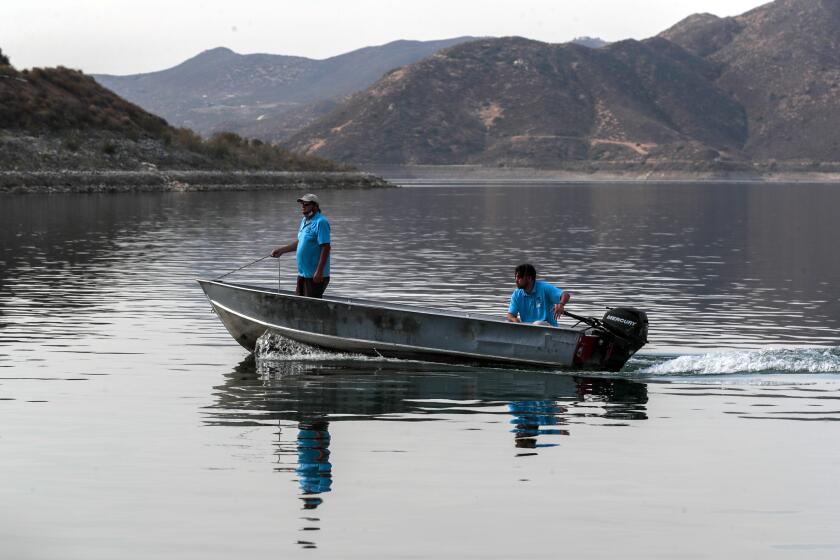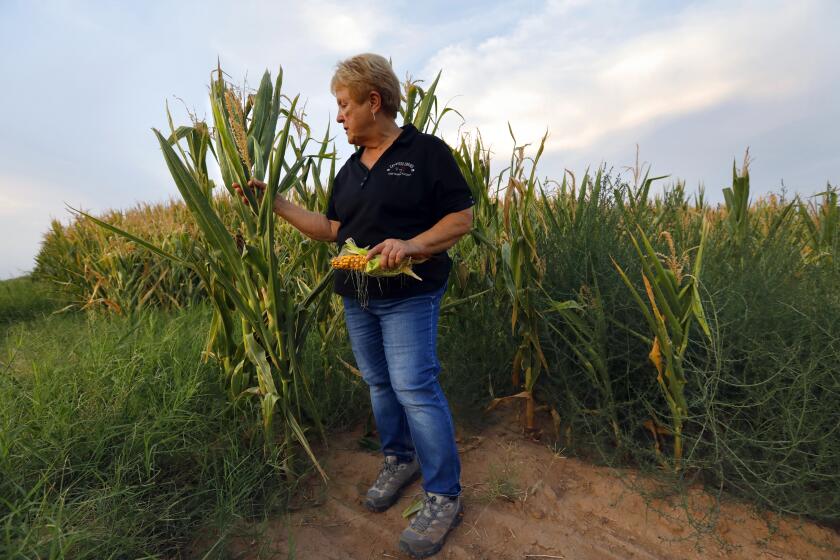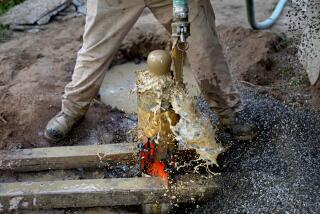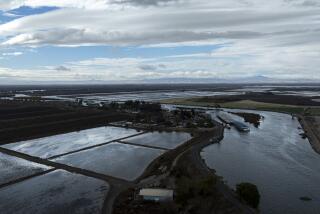As drought worsens, regulators impose unprecedented water restrictions on California farms

Amid intensifying drought, state water regulators voted Tuesday to enact a drastic emergency order that will bar thousands of Californians — primarily farmers — from using stream and river water.
California’s complex water rights system is designed to allocate water use during times of shortage and such curtailments, while rare, are not unheard of. But the scope of Tuesday’s order — which will apply to thousands of senior water rights across a wide swath of the state — is unprecedented, officials said.
While the move has been protested by some farmers, irrigation districts and others, California Department of Food and Agriculture Secretary Karen Ross called the decision “a necessary step,” saying the fact that senior water rights holders were included “speaks to the severity of the hydrology and what climate change has presented this year.”
“It is a painful moment. We know the impacts are real,” Ross said during Tuesday’s meeting.
After several hours of public comments, the State Water Resources Control Board voted unanimously to pass the “emergency curtailment” order for the Sacramento-San Joaquin Delta watershed. The regulation will go into effect about two weeks from now, subject to approval by state Office of Administrative Law, with the issuing of formal curtailment orders to follow.
About 5,700 Northern California and Central Valley water rights holders — who collectively hold approximately 12,500 water rights — will be subject to the forthcoming curtailments , according to Erik Ekdahl, deputy director of the state water board’s Division of Water Rights.
The Edward Hyatt Powerplant at Lake Oroville could go offline as soon as August and trigger a potential power crunch this summer.
The order will largely affect rights holders using water for agricultural irrigation purposes, though some municipal, industrial and commercial entities will also be affected. The regulation carves out an exemption for health and human safety purposes, meaning that water for drinking, bathing and domestic purposes won’t be subject to the curtailment.
The water board previously released a draft version of the proposed order in mid-July, following a notice of water unavailability — which urges, but does not order, people to stop diverting water. That was sent to many rights holders in mid-June.
Lake Mead is at the lowest water levels in its 85-year history. Federal officials who manage the lake expect to soon declare a water shortage.
“It’s kind of the topic of conversation everywhere, whether you’re in the feed store or the grocery store or when I’m at work as a livestock advisor,” said Josh Davy, a small-scale cattle producer in Shasta County.
The perceived comfort of his local irrigation district’s pre-1914 water rights was a key component of Davy’s decision to purchase his ranch two years ago. He’s currently planning to sell his calves early at a loss and fears having to subdivide his property to pay his mortgage. Davy said that without water to irrigate his ranch, the pastures his cows graze on will quickly dry up and the current price of alfalfa negates buying hay as a sustainable option.
“Most of us that went this route, investing in property with these water rights within these districts all did it for very similar reasons in that there was security in that,” Davy said. “And now seeing that security gone, we’re really scared.”
“The state has only curtailed water rights three times before this drought — the ‘76-’77 water year, 2014 and then 2015,” said Jay Lund, codirector of the Center for Watershed Sciences at UC Davis. Lund believes that curtailments will become a much more routine practice in the state as the effects of climate change intensify. A separate curtailment order in the Russian River watershed was issued Monday. The board has also issued notices of water unavailability on the Scott River in Siskiyou County.
Karrigan Börk, an acting professor of law at the UC Davis School of Law who focuses on water rights, said he believed the way the state water board had handled the process for this year’s emergency regulation would skirt the legal issues raised in 2015, when a number of irrigation districts sued the state over that year’s curtailments.
“The way they’re doing it now, I think they will be in the clear,” Börk said. “I’m sure someone will challenge them anyway, because this is California and that’s what we do.”
Diamond Valley Lake, an “inland ocean,” is Southern California’s prime defense against drought.
Drought conditions in the state rapidly worsened this spring, when expected snowpack runoff to the watershed decreased by almost 800,000 acre-feet — an amount nearly equivalent to the capacity of Folsom Reservoir — between April and May.
Gov. Gavin Newsom declared a drought emergency in 41 of California’s 58 counties on May 10. In that same month, many farmers were warned that they would receive little or nothing from two large allocation systems, the federal Central Valley Project and the State Water Project.
“The simplest terms are the snow was kind of there and then it wasn’t,” said David Rizzardo, chief of the hydrology branch at the state’s Department of Water Resources.
According to Rizzardo, it’s not uncommon to lose 10-20% of the snowpack to normal hydrological processes, particularly following a dry year. But losing just under 80% — let alone in such a short period of time?
“It’s beyond unprecedented,” Rizzardo said. The hydrologic conditions witnessed this year have been forecast in climate change models, but according to Rizzardo, such scenarios were expected to come to bear decades from now.
Nearly all of Arizona is in drought, with large swaths in extreme drought. Experts say the picture may well get worse in a state where more than a third of its water comes from Lake Mead.
Rizzardo characterized higher temperatures, drier soils and the effect of large-scale fires in the watershed as three of the primary factors driving the loss in projected runoff. (The effect of fires is two-fold, according to Rizzardo. The loss of tree cover and brush puts more direct sun radiation on the snow, which causes it to melt faster. Sooty debris from fires also creates dark surfaces, which absorb — rather than reflect — the sun’s radiation, causing even more melting.)
The delta itself is formed by the convergence of the Sacramento and San Joaquin rivers in the western Central Valley, but the sprawling delta watershed stretches all the way from the Oregon border in the northeastern corner of the state to just north of Fresno, encompassing much of the Sierra Nevada, as well as cities like Redding, Chico, Sacramento and Stockton.
Broadly speaking, runoff from the Sierra snowpack, which feeds major Northern California reservoirs and dozens of rivers, travels through the watershed and into the delta, which then connects to the San Francisco Bay. Water from the delta contributes to the water supply for more than two-thirds of Californians and is also used to irrigate millions of acres of farmland.
The prospect of salt water intrusion — a kind of tug of war between the tide pushing in from San Francisco Bay and the freshwater flowing through the watershed into the delta and out toward the bay — looms large over drought discussions in the delta.
Without sufficient delta outflow, the sloshing tides can bring seawater further into the delta, threatening the delicate balance at this key nexus of California’s water system. In a worst-case scenario, where salinity intrudes too far into the delta and reaches the pumps, it could endanger the water supply for 25 million Californians and the irrigation supply for 3 million acres of agriculture, according to Ekdahl. Officials are concerned with retaining enough water to maintain sufficient delta outflows if next year is also dry.
The curtailments will create hardships for many growers, particularly those without access to well water. But the burden may be lessened by the time of year. Irrigation needs vary widely from farm to farm and crop to crop. Generally speaking, however, the biggest demands for agricultural irrigation in the delta watershed tend to be in the late spring and summer, meaning the bulk of water use for the year is likely behind many growers.
“It’s coming toward the end of the season here, as everything’s dwindling in a very dry year, the curtailments may not make a huge difference for a lot of crop types,” said Chris Scheuring, senior counsel for the California Farm Bureau.
“For some farmers, it may be pretty difficult to comply with this, but it’s also been signaled ahead of time and anticipated,” said Jeffrey Michael, an economic forecaster and director of the Center for Business and Policy Research at the University of the Pacific in Stockton. “Most farmers have some ability to substitute water supplies, sometimes tapping groundwater or alternative supply.” But both of those options come with their own complications.
Due to the lack of supply, buying water from those who still have access could be prohibitively expensive, and the 2014 passage of California’s Sustainable Groundwater Management Act imposes rules on groundwater use.
Michael said he doubted the board’s decision would have any significant impacts on food prices in the near term.
“I think that many sectors of California agriculture are going to be able to squeak by this year,” Scheuring said. “The real question is, what happens next year, if we have another dry year? That’s the big unknown that’s scared everybody. And I don’t think it’s just agriculture that’s going to need to worry next year if that’s the case.”
More to Read
Sign up for Essential California
The most important California stories and recommendations in your inbox every morning.
You may occasionally receive promotional content from the Los Angeles Times.
